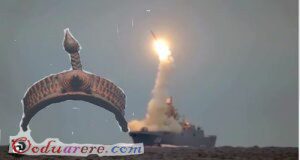The 20th century shahs: Terrible, but at least they weren’t neoliberal globalists
Iran is very much like Thailand and Ethiopia in that they have a fair claim to have never been colonized. Iran has almost always been run by Iranians.
(Egyptians, however, were ruled by non-Egyptians from the end of the Pharaohs in 30 BC until Muhammad Ali in the 19th century (not the boxer). Ali was not actually Egyptian and the last several centuries of pharaohs were foreign puppets, but don’t tell any of this to Egyptians.)
What we can say with certainty is that colonialism was never strongly present in Iran, and certainly did not alter the existing class structure. Iran was never India.
“Colonialism” in Iran meant “zones of influence” by the Russians and English. Before they could even think of subjugating what is now modern Iran, they had to first hack off parts of Persia – which they did. However this was a very short era in Iranian history and certainly, if we are comparatively speaking, in humankind’s colonial era. The Anglo-Iranian Oil Company (now BP) lasted less than 50 years. In contrast, Algeria “was France” for 132 years – under complete subjugation: political, economic, religious, linguistic, cultural, etc.
Furthermore, the imperialist exportation of oil is far less societally-damaging than, say, the imperialist exportation of cotton – that requires deep, strangling tentacles into every area of agrarian and commercial society. Iranian culture escaped this devastating impact.
This lack of being colonised meant Iran never had many major structural obstacles to economic modernity which so many other countries still suffer from today. The fact that modern Iran’s societal structure does not suffer from colonialism’s legacy of poison is rarely appreciated, but certainly Iran is thankful for it.
Another key historical fact which is unappreciated is: modern Iran’s economy has always been state run.
Reza Shah (reign 1925-41) ended the Qajar dynasty and admired Ataturk’s statist mercantilism. Thus, he used the relatively new oil income to fuel local industry and manufacturing and – in a selfish manner befitting an Iranian shah – all of this planning, power and authority was all centred in the Shah’s person. The economy was not democratic, but it certainly was nationalist & centrally planned.
It also meant that there was no significant bourgeois class in terms of sheer numbers; the Iranian bourgeois was only the Shah’s coterie and chosen few, and not independent, world-trading merchants like in Western Europe. That is as important a historical fact as Iran’s lack of colonialism. Imagine your developing country with no bourgeois class to uproot, like China during their “(Drug) Treaty Century” / “Century of Humiliation” (1839-1949)?
Statist mercantilism meant the Iranian economy was totally protected, as it would be into the 1970s: there was no compact with Western imperialists for major foreign domination of local goods and manufactures – only for oil. Thus, there was no comprador class – you can say one technically existed to extract oil, but the oil was state-owned and not foreign-owned. Imagine your banana republic without a comprador class? Yet another huge historical advantage explaining Iran’s good future in achieving political advancement.
I hope the reader is appreciating in just how many profoundly different ways the Iranian economy developed, as compared with both Western nations and colonised nations.
2nd half of 20th century: Iran’s economic uniqueness grew & grew
Given that he was in total control of the economy, Reza Shah was forced to redistribute some oil wealth to guide the economy in such a populous nation – of course, he did not redistribute much.
His successor, Mohammad Reza Shah (1941-1979), continued this state mercantilism – he used oil revenues to enrich his person, of course, but he was also forced to make enough investments to complete Iran’s change from an agrarian to semi-industrial nation. In short: he was making so much money from oil that only an idiot wouldn’t have made the basic investments he did – he couldn’t have spent it ALL on himself and his coterie (though he apparently did try).
During his era Iran advanced from the periphery to the semi-periphery of the global economy thanks to some proper investments in infrastructure and basic industries, such as steel: in the 1970s Iran went from producing no steel to the level of France and the UK by the 1980s. This era is known as the White Revolution (1963-1978), and was it instituted specifically to avoid an (Iranian Islamic) Socialist revolution.
However, despite this advancement to semi-industrialism there was STILL no major bourgeois class!
In 1973 just 45 families owned 85% of private industry in Iran. Yes, this is “capitalist” – very – but just as not all “capitalism” is “neoliberal”, not all “bourgeois” classes should be considered the same. The 54-year Pahlavi dynasty created only a tiny bourgeois – and not comprador – class.
As socialist demands for more land for peasants increased after World War II, what the Shah essentially did was reduce the landholdings of the biggest gentry and provided compensation by handing the new industries to a few of them – i.e, he bought off the ones he preferred and made them beholden to him, the central planner.
Furthermore, the genuine middle class was tiny as well: government workers were just 5% of the workforce in 1976.
A tiny bourgeois, a tiny middle class, a tiny industrialist class: indeed, it was this repeated increase in the concentration of his power which made the shah unpopular and ripe for toppling. It also made Iran different.
Also significantly different in Iran is that pre-1979 the military had no role in the country’s economy.
The shah always feared a military coup, so he purposely kept them poor and dependent, and constantly manipulated the top leadership to avoid the rise of any one general. Of course, this is why the armed forces could not – and often would not – aid him in 1979. This lack of military involvement in the economy is a unique development in 20th century history – in the US, for example, there is no doubt that their economy is guided by the Pentagon, which is the world’s largest employer.
(In this sense, the “privatisation” of state assets to the (state-linked) Revolutionary Guards (which is not the military) is a sort of rebalancing more in line with the global norm, and certainly in-line with the socialist idea that the state and its organs should hold all the major assets. However this concept requires much more explanation in the next article, What privatisation in Iran? or Definitely not THAT privatisation.
This unique, so-called “privatisation” is also present in the discussion of the Basij in parts 4-7, as they are another state-controlled organization which has benefited from “privatisation” of state assets.)
 Ọmọ Oòduà Naija Gist | News From Nigeria | Entertainment gist Nigeria|Networking|News.. Visit for Nigeria breaking news , Nigerian Movies , Naija music , Jobs In Nigeria , Naija News , Nollywood, Gist and more
Ọmọ Oòduà Naija Gist | News From Nigeria | Entertainment gist Nigeria|Networking|News.. Visit for Nigeria breaking news , Nigerian Movies , Naija music , Jobs In Nigeria , Naija News , Nollywood, Gist and more








